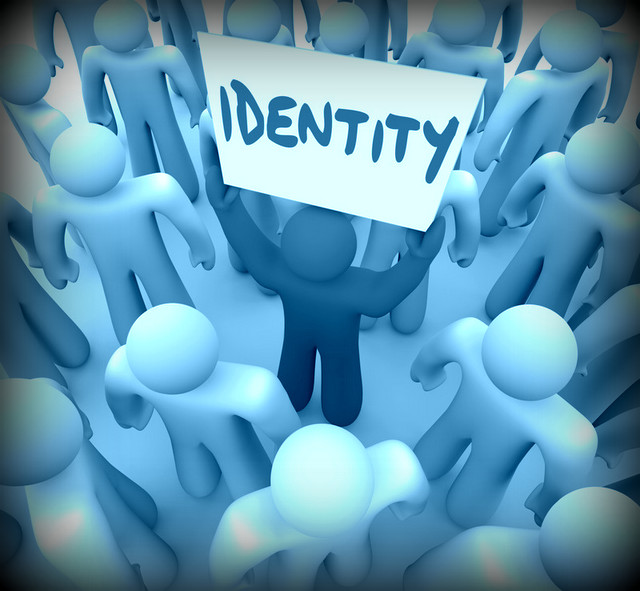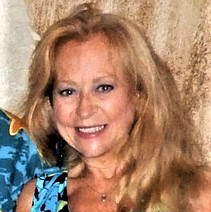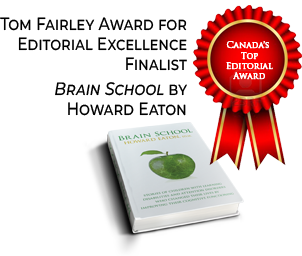A first-time fiction author’s task of assigning names to the characters in his or her novel can be likened to the task of new parents in naming their first-born child. It’s exciting to name your characters—it gives them solid identities that take shape in your mind, hopefully growing and developing into fully rounded, unique individuals as you write. Your first inclination may be to assign your characters your favourite names for boys and girls, men and women, but the responsibility of giving your characters names readers can relate to and identify with goes beyond your personal favourites. While much of the process of naming characters is just common sense, it’s a good idea to keep several naming principles in mind as you create your fictional characters.
1. Visualize your characters
In your mind, picture your characters. What are their defining features, physical and otherwise? Write lists of their physical, intellectual, and emotional characteristics. What do they do for a living? What are their interests and passions? What are their stellar qualities and their darkest secrets? Next, begin searching lists of baby names. A name—the right name—is bound to resonate with you soon, given the traits you’ve outlined for that character. When you get to the beta stage, ask readers if the characters’ names resonate with them. Ask them, “Does he seem like a [fill in name] to you? Can you picture him?” Bear in mind that names are hugely individual preferences, and not all readers will have the same reactions. Some people have told me, “You don’t look like an Arlene.” Hmm.
2. Era, age, locale, and culture
Most authors instinctively know that names should reflect the character’s age as well as the era, ethnic background and culture, and locale in which the story takes place. Let’s look at each of these.
Era: Particularly in the modern Western world, names fall in and out of fashion quickly. “Arlene” is an old-fashioned, dated name, the popularity of which peaked in the 1930s. I was named after my aunt Marlene Dittrich, who was named after singer and actress Marlene Dietrich, and my parents gave little consideration to the name’s waning popularity by 1960. It’s unlikely you’d name your English Victorian heroine Brittany or Amber or Madison or Courtney. But you might not want to name her Hortense, either, since although that’s a period name, by today’s standards it sounds ugly to a reader’s ear.
When naming either your historical characters or your modern ones, Google is your friend. Websites on baby-name popularity abound on the Internet. There are so many that I’ll list just a few here that appear near the top of Internet searches: http://www.babynames.com/ and http://www.babycenter.com. And check the popularity of every name you choose for any given era with this site: http://nametrends.net/. Another way to find bygone-era names is to visit your local library’s archives, looking at birth and death records, school yearbooks, or newspaper articles.
Age: Not only is it important to give your characters names that reflect the era in which they live, but the names should be age appropriate. Imagine reading about a modern-day college girl in Canada named Myrtle whose grandmother’s name is Tiffany? This would undoubtedly be jarring to most readers. On the other hand, a look at the top baby names of 2014 shows that many old names have come back into fashion in the English-speaking world, such as Emma, Sophia, Ava, Charlotte, Liam, Noah, and Jacob (http://www.babycenter.com/popularBabyNames.htm?year=2014). Some names, like Elizabeth, Sarah, Michael, Matthew, or William, seem perennially fashionable yet never trendy.
Geographic location and ethnic culture: If your story is set in India, for example, of course you’ll need to do your homework on Indian names for many of your secondary characters, even if your protagonists are from the West. Here is one resource for ethnic names (but there are many others): https://babynames.com/. Again, be sure the name is appropriate for the period in which your story takes place.
It’s equally important, for authenticity, to research specific Western locales. For example, if your story has some scenes set in Richmond, British Columbia, it’s vital for you to know that the demographic there is predominantly Asian—East Indian, South Asian, Chinese—so at the very least, some of your secondary characters, if they live in Richmond, should have names from these cultures.
3. Ethnic names and name meanings
These days, with people of many different ethnicities reading English, cultural diversity in your fictional characters is important if you want your story to appeal to the widest possible spectrum of readers. This holds true no matter what genre you’re writing in. Of course, your story’s content will determine your characters’ backgrounds and ethnicities, but if possible try to include a mix of culturally diverse characters.
Use foreign names sparsely, if possible, but if you can’t avoid a lot of them, try to keep most of them short. I had some difficulty keeping Raskolnikov and many of his cohorts in Crime and Punishment straight because of their long, unpronounceable Russian names. Their foreignness just wouldn’t stick in my mind. But of course, people read Dostoyevsky’s novels because they’re famous classics and long foreign names can be tolerated; a new writer can’t usually afford such luxuries.
Do your homework. Do a background check on the origins of the names you choose, in particular the surnames. You don’t want to learn from a reader, after publication, that your Russian character Andreas Augustyn’s last name is actually Polish. In addition, check the etymological roots of the names you choose. You might think twice about naming your drug-addicted Hollywood C-lister Amala Sinclair; both those names mean “clean,” “clear,” “pure” (unless you’re going for irony). While it may seem like a trivial detail, some reader or other is bound to pick up on it.
4. Unpronounceable names
Unless your book’s era, geographical location, and culture warrants it, try to avoid using unpronounceable or hard-to-pronounce names such as Xiuhcoatl or Xzighlab or Zbigniew. This doesn’t mean your readers are going to necessarily be reading your story aloud. But when the reader’s eyes pass over a character’s name, their brain should be able to interpret the pronunciation quickly rather than mentally sounding out each syllable each time they see the name.
As well, remember that even though your readers may not have to pronounce the name aloud, they may be listening to an audiobook or listening with the text-to-speech function on an e-reader. A difficult-to-pronounce name may even trip up an e-reader’s mechanical, computerized voice, and it won’t be easy for the listener to comprehend that either.
5. Names with odd associations
Unless perhaps your character was born to hippie parents in the 1960s or later to New-Age parents, names like Candi, Bambi, Apple, Flower, Bootsie, Chastity, Kitty, Ziggy, Huckleberry, Jojo, Thor, or Atlas might give the wrong impression to readers. To me, “Bambi” sounds like an aging stripper, and not, say, a professor of economics. These kinds of names have odd and often negative associations that may subtly lower readers’ opinion of a protagonist you’d prefer to be seen as intelligent, positive, and strong.
6. Names with famous associations
The last thing you may want is for your unique, original protagonist to remind readers of someone else. The general rule is to stay away from names that belong to someone famous, like Elvis or Angelina, unless you’re striving for some kind of intentional effect, perhaps comedic. In particular, avoid names like Adolf, Saddam, Napoleon, Caesar, Genghis, Darwin, and so on, that are indelibly associated in most people’s minds with tyrants or other controversial characters from history.
7. Soft or hard? Pretty or ugly sounding?
Is your character soft or hard edged, aggressive or timid, feminine or masculine? Without falling into stereotypes, you’ll want to keep personality type in mind when choosing the appropriate-sounding name for your characters. Some combinations of sounds are soft; others are hard and sharp. For example, names with a “k” sound—Katrina, Brooke, Mackenzie, Parker, Dirk, Rocky, Michael—will give your character a harder edge. Names with a “sh” or “s” sound—Shawn, Shania, Jasper, Seth, Austin, Felicity, Mercedes—will be appropriate for a softer character. Similarly, the vowels “o” and “u” tend to be harder, while “a,” “e,” and “i” are softer.
The word euphony means “sounds that are pleasing to the ear,” and that includes how we hear words and names in our brains. Are your characters’ names euphonic? Some antiquated names seem dissonant to our modern ear. Even if you’re writing historical fiction, it may be best to avoid names for your protagonist such as Archibald, Rupert, Oswald, Horace, Herbert, Bertha, Prudence, Gertrude, Myrtle, Hortense, Ethel, Mabel, or Mildred—names that tend to sound ugly today. However, sometimes nicknames can be euphonic, like Trudy and Millie. (Apologies to readers with these names; remember, this blog is just one person’s opinion. Besides, I have a pretty un-euphonic surname myself: Prunkl. Although I’m told it’s a lovely word in German, it just doesn’t come off well in English with the hard “k,” the “unk” sound, and the dearth of vowels. A name you might give a villain.)
8. Avoid duplicate names
In real life, we meet people all the time with the same names. Depending on your generation, common names might be David, John, Jim, Jennifer, Susan, Brittany, or Sarah. How many Davids do you know? I can count about twenty in my broad circle of acquaintances, past and present. It’s important to remember that a novel is not real life; it’s art and artifice. Just as you wouldn’t write dialogue exactly as it would unfold in real life with lots of pauses and hmms and uhs and mumbling (see my blog post on writing natural dialogue here), you need to make compromises with characters’ names that may seem artificial but that help readers’ comprehension. That means no duplicate names, unless, again, you’re using them for comedic or other effect. More than one Bob or Bill or Mary will have readers confused, whether they’re secondary characters with few memorable traits introduced 100 pages apart or whether they’re characters who spend a lot of time together.
If characters have the same last name, be sure to differentiate them somehow. For example, Mr. Beastley’s father and son may also be Mr. Beastleys, but it’s best to call them by different first names or nicknames if you don’t want your readers confused. “Senior” and Junior” are dated and are still too similar; as well, they run the risk of having no identifiable distinctions and may not stand out in readers’ memories.
9. Subtle impressions
Despite what a name means to you, different names will invoke individual images for each reader. To one reader, the name Elizabeth might inspire an image of a green-eyed, titian-haired, voluptuous woman, while another might envision a petite brunette. Again, beta-reader friends may be able to help. Another approach is to ask, before letting them know the details of your character, what they think of a particular name and what associations come to mind for them with that name. And remember that names are a highly personal preference, and you won’t be able to please everybody.
10. More tips
- Variety: Of course, your story will dictate how your characters are named. But as a general rule, use variety, even within a certain culture or era. Mix long names with short names, ordinary names with unusual ones, foreign names with familiar ones, and soft-sounding names with sharper-sounding ones. If your novel is set in modern times, avoid using too many trendy or unusual names. Variety is key.
- Alliteration: Use alliteration for a more memorable name. This works especially well in children’s or YA fiction. Think Lois Lane, Donald Duck, Bilbo Baggins, Horatio Hornblower, Peter Pan. Many characters in the Harry Potter series have alliterative names: Godric Gryffindor, Helga Hufflepuff, Rowena Ravenclaw, and Salazar Slytherin. But don’t overuse this literary device.
- Differentiation: If two characters are closely connected in your story, make sure their names are distinctively different, and especially avoid having their names begin with the same letter. Mike, Mack, Mick, and Mark might be easily confused, as might James, Jack, and Jason, or Jan, Jen, June, Joan, and John.
- Odd acronyms: Just as you would when naming your newborn, if you’re using a middle name, be aware of what the initials may spell. Perhaps you intentionally want to use humour. Maybe you deliberately want to name your lecherous womanizer Calvin Arthur Drummond.
- Liability: If your villain is a despicable serial murderer, it’s best to choose either a very common name or an unusual name that you can’t find anywhere on the Internet. If your book becomes a best-seller, you don’t want anyone coming after you angrily threatening a defamation lawsuit because you’ve seemingly implicated them as a criminal. Unlikely, but why risk it?
In summary
Give your characters names that show respect for their age, era, geographic origins, and culture. Go for variety and originality, but don’t make the names so difficult to read or pronounce that they won’t register in readers’ minds. And remember that you’re not going to please everyone because we all have strong preferences when it comes to names. If I ever write fiction, I might name my female protagonist Aurelia—my favourite female name—but I’m guessing I’d have at least some dissent on that because it’s so unusual.
One last tip: it may be best to avoid naming your dastardly villain Arlene Prunkl. As far as I know, I’m the only Arlene Prunkl in the world, so I’ll know you’re writing about me. And be assured, I’ll track you down!





15 Responses
You’ve really nailed the name game – and with so many entertainingly
insightful examples. You’re right when you point to names being
intensely associative, in addition to all the important reminders about
time, age, location, and culture. (Professor of Economics Bambi is now
forever imprinted in my mind.) And so Old Will was quite incorrect: who
knows if a rose by any other name would smell sweet, or simply conjure
up something sickening? I can’t believe I’ve never questioned
this–thanks for the Shakespearean epiphany! My own name, Irene, hasn’t
been in style since the 1920s; alas, there has never been a decade, or
even a year, when I could indulge in feeling trendy. Thanks for this
great piece, Arlene. I’ll have even more great fiction tips to pass on
to my authors.
Thanks for your feedback, Irene. Your comments on my blog are always so eloquently phrased. Names are indeed intensely associative. I remember a girl way back in elementary school who was a bully, and even to this day when I hear her first name, my memory takes me back 45 years to unpleasant associations. Because of these associations, a rose by any other name is sometimes not a rose at all! Nice reference to good old Will.
Irene and Arlene are similar in that their popularity dates back 80+ years. So we both know the feeling of having an unpopular name. I’m fine with it, though; at least I know my full name is unique in the world. I take some solace in that, given that the Internet is my sole marketing tool to promote myself and my business.
There is a difference between a “dated” name and a timeless name. Elizabeth is timeless but Bette is dated. George is dated but Alexander is timeless.
There are some names that are eternally young (Tiffany/ Ashley). I can’t imagine a grandma named Tiffany or Brittany.
My name problem is repetition. After looking at two separate series I have written, I see that I have overused names starting with S, C, K and J. The “C” and “K” names have the same sound, so really, it’s over the top. I have characters named Calvin, Kory, Candace, etc.
Problem with names apply to cities as well. In sci-fi novels, I’ve been confused when the Martian cities are Torope and Torond and the heroes are Tarep and Talerd. You can’t get around Toronto and Toledo being close sounding names; but in writing sci-fi, let’s choose other letters of the alphabet.
Interesting and very astute point, Mr. Cadillac. I confess the name of cities didn’t even cross my mind as I wrote this post. That’s probably because I don’t edit a lot of sci-fi. But that brings up another point I made in my post: I’d advise not having too many unusual names — whether characters or places — because they don’t stick in readers’ minds and memories.
Thank you for the advice. After reading this article, I looked at my character list again, only to find I committed some 90% of the sins you identified. I still am left with a puzzlement: The antagonist is a Mob boss; I googled his name only to find a real person with the exact name who is a partner in a Philadelphia law firm. Needless to say, I am going to change it, but how do I avoid giving my characters names that do not duplicate somebody somewhere. “Zog Perfoodle” is not likely to induce fear in my protagonist.
Glad my blog post was of help to you, Mark. As for your question, it would be pretty difficult to avoid duplicating someone else’s name somewhere on the planet (unless they have a name like Arlene Prunkl!). To get around this, you add a disclaimer to your copyright page, something along the lines of: “This is a work of fiction. Names, characters, places, and incidents are either the products of the author’s imagination or are used fictitiously and not to be construed as real. Any resemblance to actual events, locales, organizations, or persons, in name or in personal characteristics, living or dead, is purely coincidental.”
Did you have Dittrich relatives in early 1900s San Francisco?
Yes, I did! Why are you asking? Send me an email and we can discuss it more!
my email is moeenare@gmail.com My family from Michigan came to SF and married into Dittrichs in the early 1900s.
I have H. Dittrich, born 1849, OH, married to Helen Tyler Mead (Cleveland , OH to San Francisco). Helen’s parents were James F Mead and Elizabeth. Her brother was Martin Tyler Mead of the Pony Express and Mead Foundry. moeenare@gmail.com. Moeena
I’ve been wondering what to call characters when writing in the third-person limited. If a character’s proper name is ‘Margaret’, say, and the POV is her husband who calls her ‘Maggie’, should the non-dialogue refer to her as Margaret or Maggie?
He watched as Margaret did whatever
or
He watched as Maggie did whatever
Thanks!
Hi Sal,
Good question! In the narrative portions of the manuscript, if the POV character is her husband, you would refer to her as Maggie because that’s who she is from his point of view. It could get tricky, however, if you were writing in third-person multiple. In that case, I would suggest calling her Margaret, if that is what everyone else calls her except her husband when he is speaking to her.
Thanks for replying! — I’m definitely trying to limit the sections to a single POV, so will use Maggie when using her husband’s POV.
Stay safe!
Sal, in this reply, it sounds a little like you are not using third-person limited but rather third-person multiple. If the latter — if you have more than one POV character in the book, it’s best to stick with the character’s real name, the one everyone else knows her by. In my first reply, I assumed you were using third-person limited, which means the POV is limited to only character, not just in a particular scene, but in the whole book. For more on the different types of POV, you can read my blog post here: https://penultimateword.com/editing-blogs/how-to-write-deep-pov-its-all-in-your-perspective/. Also, Google to find much more information on the internet about the different POVs.